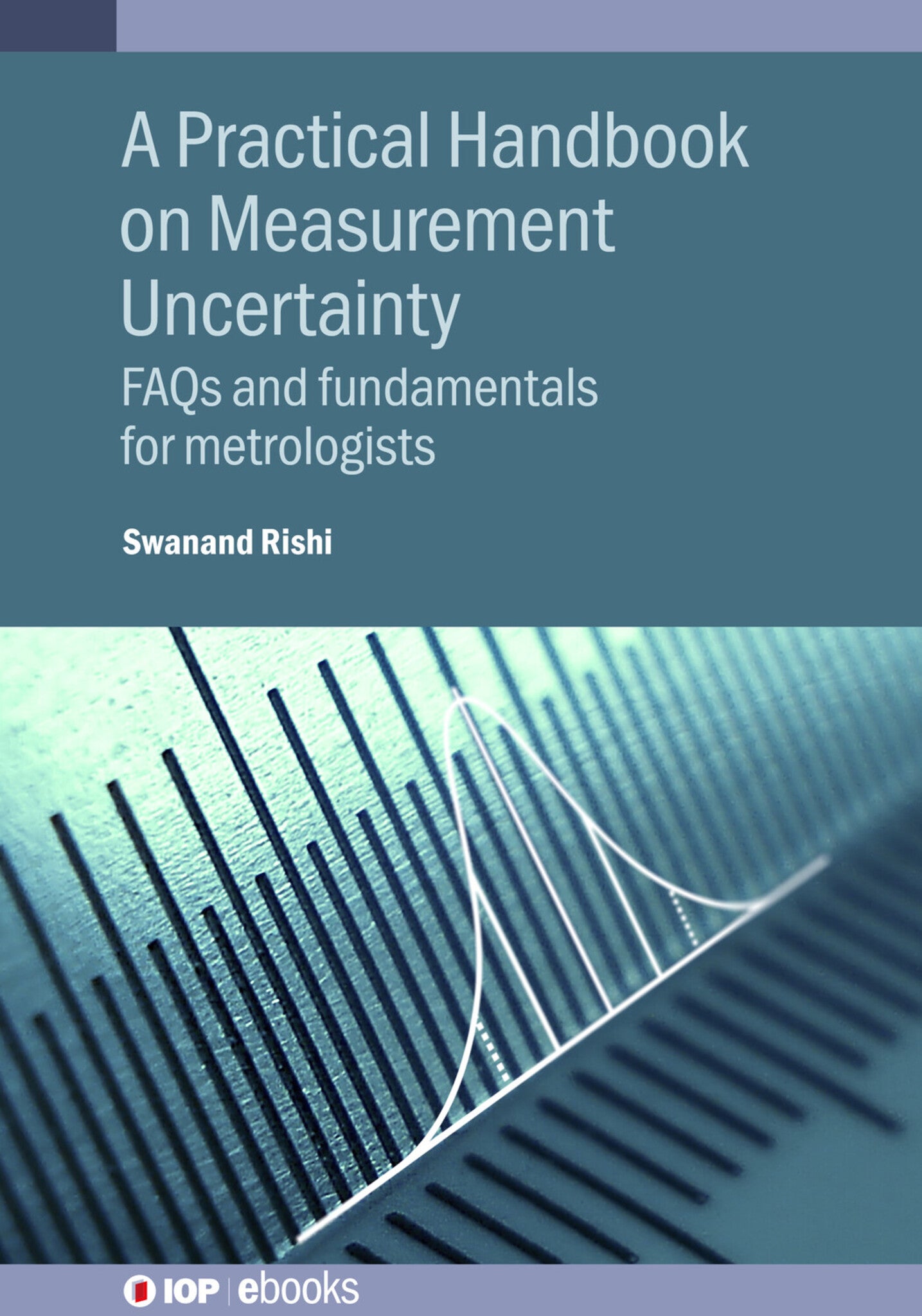We're sorry. An error has occurred
Please cancel or retry.
A Practical Handbook on Measurement Uncertainty

Some error occured while loading the Quick View. Please close the Quick View and try reloading the page.
Couldn't load pickup availability
- Format:
-
29 July 2024

In the field of metrology, measurement uncertainty has a special place of its own since “No measurement result is complete without explicit statement about its uncertainty”. Hence for all accredited laboratories, evaluation of measurement uncertainty is a mandatory requirement. The purpose of the book is to clarify the rationale behind certain assumptions or ideas in measurement uncertainty, present the concepts from practical perspective, help readers arrive at a realistic uncertainty figure and be a ready-reference hand-book. The book can serve as a quick reference book on basic concepts in measurement uncertainty. The book is written in a manner so that practicing metrologists can open any chapter and start reading. The topics covered are applicable across all fields of scientific measurements.
Key Features:
- A ready-reference practical hand-book
- Clarifies the rationale behind certain assumptions or ideas
- Presents the concepts from practical perspectives
- Provides insight, examples and case studies
- Helps readers get answers to FAQs

TECHNOLOGY & ENGINEERING / Measurement, Scientific standards, measurement etc, SCIENCE / Weights & Measures, TECHNOLOGY & ENGINEERING / Quality Control, Engineering measurement and calibration

Preface
Acknowledgements
Author biography
List of abbreviations
List of symbols
How to read this book
Part A Understanding the fundamentals of measurement uncertainty
1 Using correct terminology
2 Why do we need to estimate uncertainty?
3 Should we talk about the ‘evaluation’ or ‘calculation’ of uncertainty?
4 What uncertainty is not
5 Various error terms and bias
6 The Guide to the expression of uncertainty in measurement—the new approach
7 The law of propagation of uncertainty
8 Why is standard deviation used instead of variance?
9 Using pooled standard deviation
10 Some uncommon uncertainties
Part B Dealing with distributions
11 The normal distribution, the t-distribution, and the standard normal distribution
12 Do Type A and Type B evaluations correspond to random and systematic errors?
13 Reproducibility in uncertainty evaluation
14 How is it that we can combine different distributions?
15 Guidelines for the selection of triangular and trapezoidal distributions
16 Is a higher confidence level compatible with a larger expanded uncertainty?
17 Mind the correlations
Part C Sample size and analysis
18 Sampling distributions
19 The sample size dilemma
20 Sample size—another approach
21 Addressing the uncertainty of a single measurement
Part D Decoding degrees of freedom
22 Why are the degrees of freedom generally (n−1) in the Type A method of evaluation?
23 Why are the degrees of freedom generally ‘∞’ in the Type B method of evaluation?
24 Effective degrees of freedom—some considerations
Part E Some contiguous concepts
25 What is the significance of the sensitivity coefficient?
26 Dealing with corrections
27 The test uncertainty ratio: use only as a guiding phenomenon
28 Guarding conformity decisions
Part F Delving a little deeper
29 Treating dominant non-Gaussian components
30 Sample analysis—how normal is the normal?
31 Sample analysis—detecting the outliers
32 Analyzing the results
33 The proper reporting of uncertainty
34 Alternative approaches in uncertainty evaluation
35 Some important notes in the GUM
Further references
Appendix A: Coefficients for the Shapiro–Wilk test and the W statistic for various p-values
Appendix B: Some useful web sites



